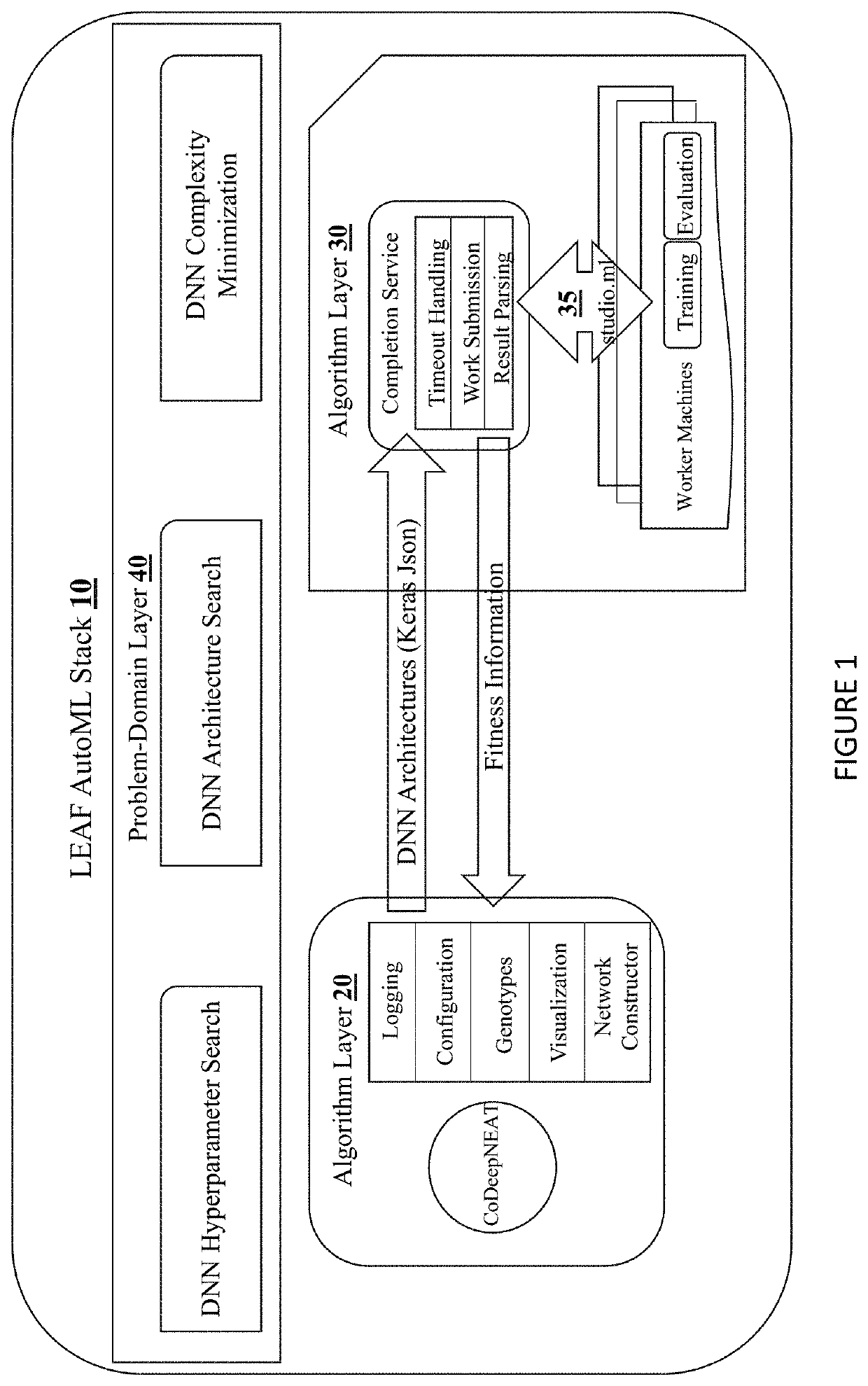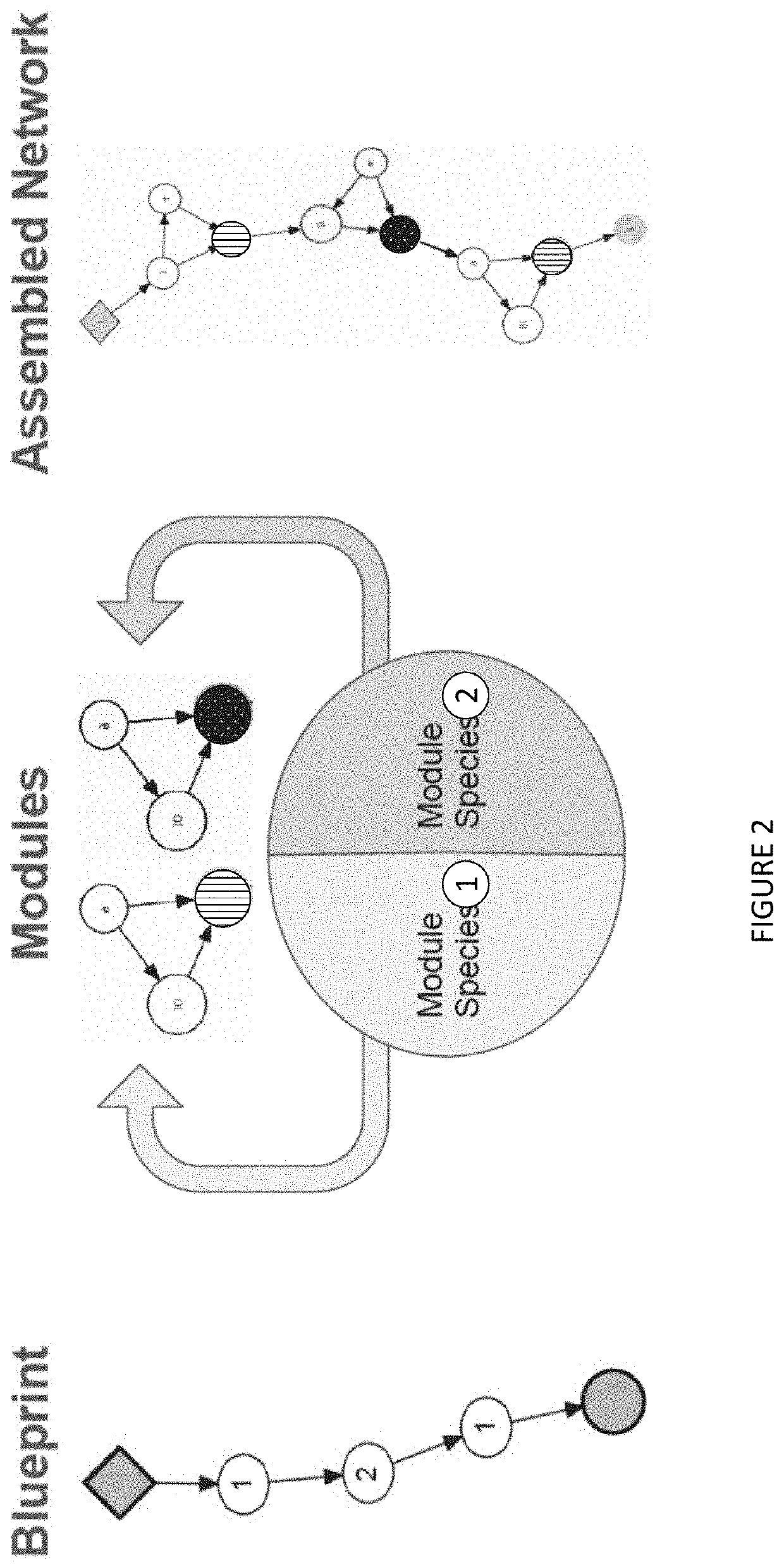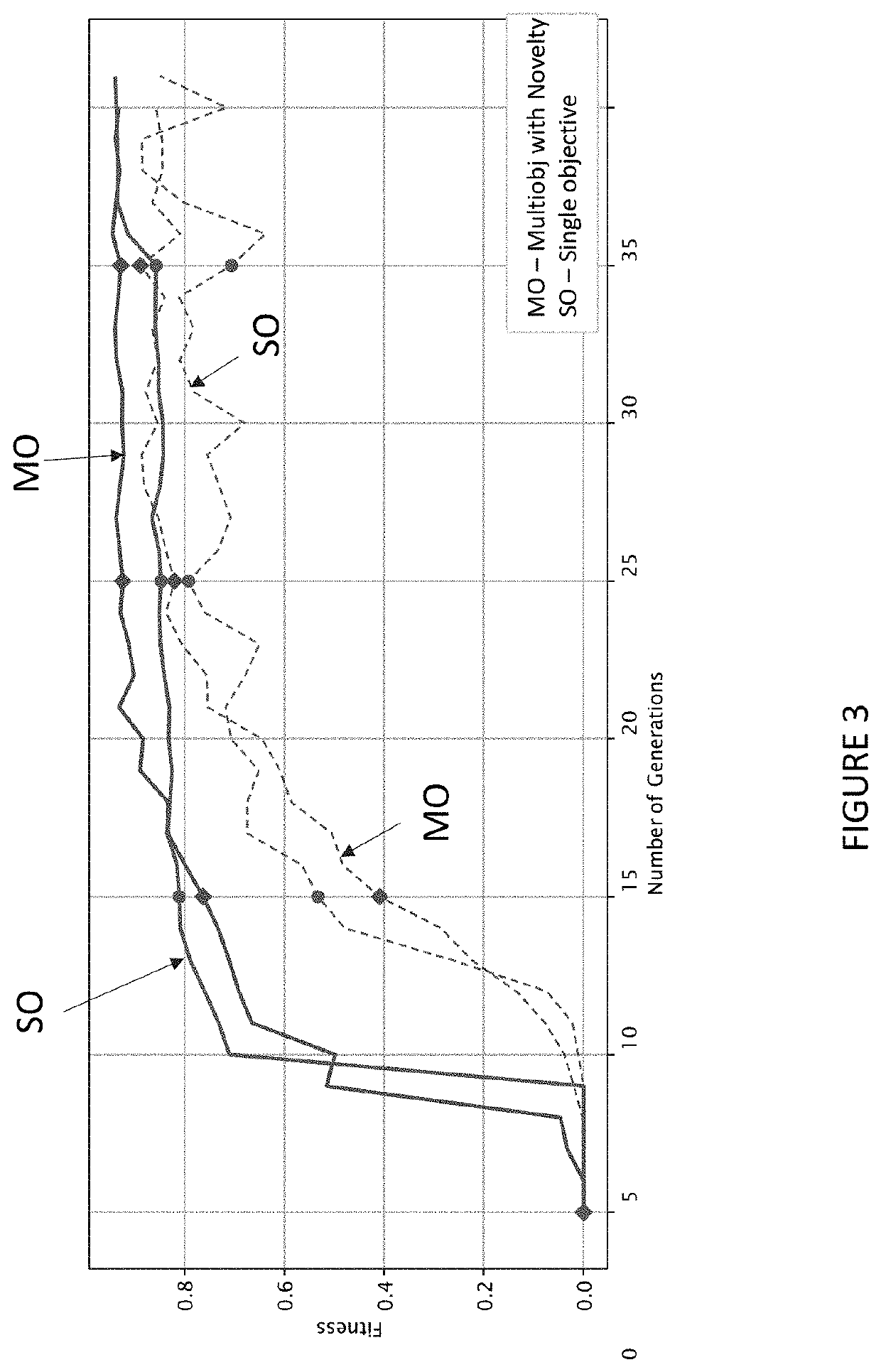Multiobjective Coevolution of Deep Neural Network Architectures
a neural network and coevolution technology, applied in the field of multiobjective coevolution of deep neural network architectures, can solve the problems of difficult configuration, large dnns, and often not used to their full potential, and achieve the effect of minimizing the size or complexity of the network, maximizing the performance of the network, and minimizing the complexity or size of the network
- Summary
- Abstract
- Description
- Claims
- Application Information
AI Technical Summary
Benefits of technology
Problems solved by technology
Method used
Image
Examples
first embodiment
[0012]In a first embodiment, a method for co-evolution of hyperparameters and architecture in accordance with multiple objective optimization, the method includes: initializing a first population of modules and blueprints containing a combination of one or more modules, wherein for each species of modules in the first population and during each generation in a plurality of generations of subsequent populations: creating a first set of empty species; for each non-empty species, determining Pareto front of each non-empty species in accordance with at least a first and second objective; removing individuals in the Pareto front of each non-empty species and adding them to the first set of empty species to form one or more sets of new species; replacing each non-empty species with the one more sets of new species; truncating the one or more sets of new species by removing a last fraction; generating new individuals using procreation, including crossover and / or mutation; and adding new in...
second embodiment
[0013]In a second embodiment, method for co-evolution of hyperparameters and architecture in accordance with multiple objective optimization, the method includes: for each generation of an evolution run: generating an assembled network population in accordance with evolved blueprints and modules; adding to the assembled network population left over networks from a last generation; evaluating each network in the assembled network population based on each of a plurality of fitness function objectives; creating a new assembled network population; when the assembled network population is not empty, determining Pareto front of the assembled network population; removing individuals in the Pareto front of the assembled network population and adding them to the new assembled network population; replacing the assembled network population with the new assembled network population; and truncating the new assembled network population by removing a last fraction.
third embodiment
[0014]In a third embodiment, an automated machine learning (AutoML) implementation system includes: an algorithm layer for evolving deep neural network (DNN) hyperparameters and architectures; a system layer for parallel training of multiple evolved DNNs received from the algorithm layer, determination of one or more fitness values for each of the received DNNs, and providing the one or more fitness values back to the algorithm layer for use in additional generations of evolving DNNs; and a program layer for informing the algorithm layer and system layer of one or more desired optimization characteristics of the evolved DNNs.
BRIEF DESCRIPTION OF THE FIGURES
[0015]The embodiments described herein should be considered with reference to the following detailed description when read with the accompanying drawings in which:
[0016]FIG. 1 is a high level schematic of a LEAF AutoML implementation system in accordance with one or more embodiments described herein;
[0017]FIG. 2 is a schematic sho...
PUM
 Login to View More
Login to View More Abstract
Description
Claims
Application Information
 Login to View More
Login to View More - R&D
- Intellectual Property
- Life Sciences
- Materials
- Tech Scout
- Unparalleled Data Quality
- Higher Quality Content
- 60% Fewer Hallucinations
Browse by: Latest US Patents, China's latest patents, Technical Efficacy Thesaurus, Application Domain, Technology Topic, Popular Technical Reports.
© 2025 PatSnap. All rights reserved.Legal|Privacy policy|Modern Slavery Act Transparency Statement|Sitemap|About US| Contact US: help@patsnap.com



